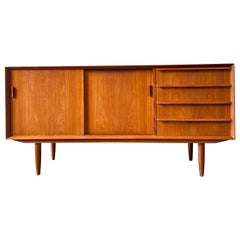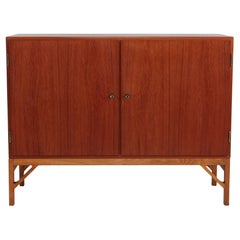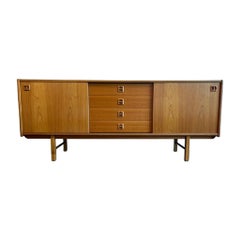Teak Credenzas
1970s Danish Mid-Century Modern Vintage Teak Credenzas
Teak
1950s Danish Mid-Century Modern Vintage Teak Credenzas
Wood, Teak
Mid-20th Century Danish Mid-Century Modern Teak Credenzas
Teak
1960s English Mid-Century Modern Vintage Teak Credenzas
Teak
1950s Danish Mid-Century Modern Vintage Teak Credenzas
Metal
Late 20th Century Swedish Scandinavian Modern Teak Credenzas
Teak
1960s American Mid-Century Modern Vintage Teak Credenzas
Teak
Mid-20th Century Danish Mid-Century Modern Teak Credenzas
Teak
1950s Danish Mid-Century Modern Vintage Teak Credenzas
Wood, Teak
1950s Danish Mid-Century Modern Vintage Teak Credenzas
Glass, Wood, Teak
Mid-20th Century English Mid-Century Modern Teak Credenzas
Teak
Mid-20th Century Danish Scandinavian Modern Teak Credenzas
Teak
1950s Danish Mid-Century Modern Vintage Teak Credenzas
Wood, Teak
1960s Italian Mid-Century Modern Vintage Teak Credenzas
Teak
Mid-20th Century American Mid-Century Modern Teak Credenzas
Teak
1970s Danish Scandinavian Modern Vintage Teak Credenzas
Teak
1960s Danish Scandinavian Modern Vintage Teak Credenzas
Teak
1960s Danish Mid-Century Modern Vintage Teak Credenzas
Wood, Teak
1960s Danish Mid-Century Modern Vintage Teak Credenzas
Teak
1960s Danish Mid-Century Modern Vintage Teak Credenzas
Birch, Teak
1960s Danish Mid-Century Modern Vintage Teak Credenzas
Teak
2010s Indian Mid-Century Modern Teak Credenzas
Wood, Teak
2010s Indian Mid-Century Modern Teak Credenzas
Wood, Teak
1960s Danish Mid-Century Modern Vintage Teak Credenzas
Teak
2010s Indian Mid-Century Modern Teak Credenzas
Wood, Teak
1960s Danish Scandinavian Modern Vintage Teak Credenzas
Teak
1970s Danish Scandinavian Modern Vintage Teak Credenzas
Oak, Teak
1950s Swedish Scandinavian Modern Vintage Teak Credenzas
Brass
1950s Danish Mid-Century Modern Vintage Teak Credenzas
Teak
1960s Danish Mid-Century Modern Vintage Teak Credenzas
Metal
Mid-20th Century Italian Mid-Century Modern Teak Credenzas
Teak
Mid-20th Century Danish Mid-Century Modern Teak Credenzas
Teak
Mid-20th Century English Mid-Century Modern Teak Credenzas
Teak
21st Century and Contemporary Indonesian Post-Modern Teak Credenzas
Mahogany, Oak, Teak, Walnut
Mid-20th Century Danish Scandinavian Modern Teak Credenzas
Teak
2010s Indian Mid-Century Modern Teak Credenzas
Wood, Teak
1950s Danish Mid-Century Modern Vintage Teak Credenzas
Teak
20th Century English Modern Teak Credenzas
Mahogany, Teak
Late 20th Century Danish Scandinavian Modern Teak Credenzas
Teak
2010s American Modern Teak Credenzas
Maple, Teak
20th Century Danish Mid-Century Modern Teak Credenzas
Teak
1970s Danish Scandinavian Modern Vintage Teak Credenzas
Teak
1960s Danish Mid-Century Modern Vintage Teak Credenzas
Maple, Teak
Mid-20th Century Danish Mid-Century Modern Teak Credenzas
Teak
Mid-20th Century Danish Scandinavian Modern Teak Credenzas
Teak
Late 20th Century Singaporean Scandinavian Modern Teak Credenzas
Teak
20th Century Scottish Mid-Century Modern Teak Credenzas
Teak
1960s Danish Scandinavian Modern Vintage Teak Credenzas
Teak
1950s Swedish Vintage Teak Credenzas
Teak
1960s Danish Scandinavian Modern Vintage Teak Credenzas
Teak
Mid-20th Century Mid-Century Modern Teak Credenzas
Teak
1970s Danish Mid-Century Modern Vintage Teak Credenzas
Teak
20th Century Danish Mid-Century Modern Teak Credenzas
Teak
Mid-20th Century Danish Mid-Century Modern Teak Credenzas
Oak, Teak
20th Century Danish Mid-Century Modern Teak Credenzas
Teak
1940s Danish Scandinavian Modern Vintage Teak Credenzas
Mahogany, Teak
20th Century Danish Mid-Century Modern Teak Credenzas
Glass, Teak
Mid-20th Century Teak Credenzas
Teak
Mid-20th Century English Mid-Century Modern Teak Credenzas
Teak
1950s Italian Mid-Century Modern Vintage Teak Credenzas
Metal
Find Vintage Mid-Century Teak Credenzas and Other Storage Furniture on 1stDibs
Antique and vintage credenzas can add an understated touch of grace to your home. These long and sophisticated cabinet-style pieces of furniture can serve a variety of purposes, and they look great too.
In Italy, the credenza was originally a small side table used in religious services. Appropriately, credere in Italian means “to believe.” Credenzas were a place to not only set the food ready for meals, they were also a place to test and taste prepared food for poison before a dish was served to a member of the ruling class. Later, credenza was used to describe a type of versatile narrow side table, typically used for serving food in the home. In form, a credenza has much in common with a sideboard — in fact, the terms credenza and sideboard are used almost interchangeably today.
Credenzas usually have short legs or no legs at all, and can feature drawers and cabinets. And all kinds of iterations of the credenza have seen the light of day over the years, from ornately carved walnut credenzas originating in 16th-century Tuscany to the wealth of Art Deco credenzas — with their polished surfaces and geometric patterns — to the array of innovative modernist interpretations that American furniture maker Milo Baughman created for Directional and Thayer Coggin.
The credenza’s blend of style and functionality led to its widespread use in the 20th century. Vintage mid-century teak credenzas and other mid-century modern credenzas are particularly popular — take a look at Danish furniture designer Arne Vodder’s classic Model 29, for instance, with its reversible sliding doors and elegant drawer pulls. Hans Wegner, another Danish modernist, produced strikingly minimalist credenzas in the 1950s and ’60s, as did influential designer Florence Knoll. Designers continue to explore new and exciting ways to update this long-loved furnishing.
Owing to its versatility and familiar low-profile form, the credenza remains popular in contemporary homes. Unlike many larger case pieces, credenzas can be placed under windows and in irregularly shaped rooms, such as foyers and entryways. This renders it a useful storage solution. In living rooms, for example, a credenza can be a sleek media console topped with plants and the rare art monographs you’ve been planning to show off. In homes with open floor plans, a credenza can help define multiple living spaces, making it ideal for loft apartments.
Browse a variety of antique, new and vintage credenzas on 1stDibs to find the perfect fit for your home today.
Shop Antique, New and Vintage Teak Furniture Today
Antique, new and vintage teak furniture has enduring classic appeal.
While teak sideboards, lounge chairs and coffee tables are luxurious additions to any living room or other interior space, teak outdoor furniture dazzles on patios and by the pool — teak is durable and strong, and can withstand extreme weather conditions. Whether you're indoors or outside, furnishings made of this tropical hardwood tree species have long been popular with design enthusiasts of all kinds.
Appreciated for its dense grain and rich luster, old-growth teak was a sought-after material among mid-century modern designers, who also pushed it to the brink of extinction.
“Teak is incredibly slow-growing, so much of what is still harvested is young, and from a sustainability standpoint, this is far from ideal,” says Brian Volk-Zimmerman of Volk Furniture in Brooklyn. When he does use it, he only goes for reclaimed teak, as many species of the tree have been over-forested.
It wasn’t always this way. In the previous century, according to Jenny Cashin — owner of the shop Mid-Century Modern Home, in British Columbia — Danish designers, and Scandinavian modernists in general, harvested teak as much as they liked. This enhanced their pieces’ handcrafted look and came to define the timeless simple shapes of mid-century modern design. “We still see current teak deck furniture that’s very porous and light,” says Cashin, who specializes in Danish modern and mid-century modern furniture made between 1940 and 1970. However, she notes, “it’s not the same caliber.”
Old-growth teak, aged 150 to 500 years old, is far denser, with a pronounced telltale grain, Cashin says. Though she can’t speak to why it found favor with Danish designers like Jens Risom, an incredibly accomplished, still-obscure furniture designer who created sideboards, dining tables and more in teak. Cashin believes their choice came down to aesthetics. Ben Erickson, a furniture maker in Brooklyn whose leather lounge chair is made of teak, believes it may have been the material’s workability.
“Even though it’s not the best on blades because it has a high mineral content, it is really beautiful to turn and shape by hand,” he says. “You can get an amazing luster by hand sanding and oiling it.”
Find a range of antique, new and vintage teak furniture on 1stDibs.





